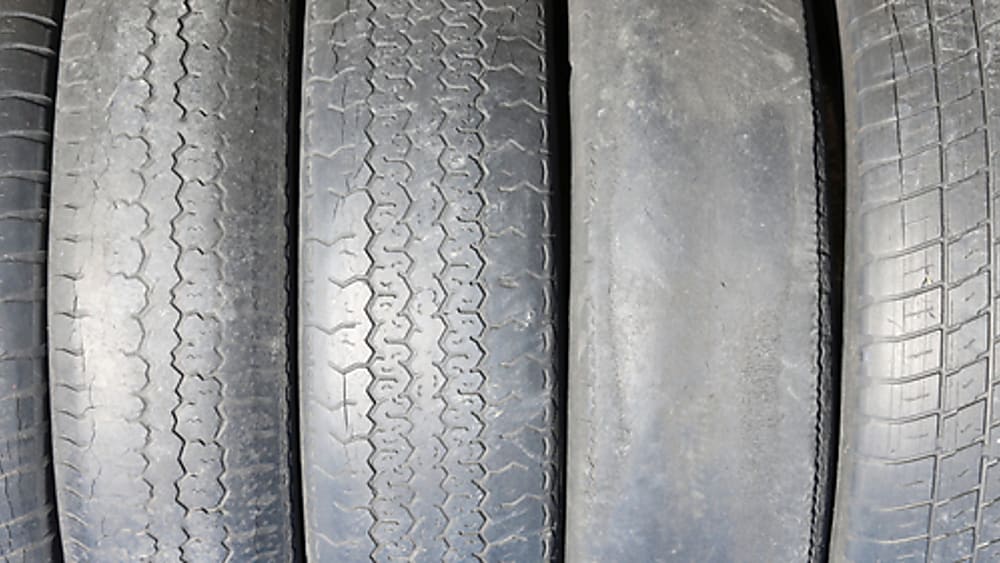When it comes to tires, bald tires aren’t beautiful-they’re downright dangerous. Bald tires increase the chance of dangerous situations and losing control, especially in bad weather. In fact, more than 1 out of every 10 vehicles on the road have at least one bald tire.
What is a bald tire?
The part of a tire that contacts the road is called the tread, and this tread wears down over time. When a tire’s tread is completely worn down to the wear bars, you have a bald tire. If your vehicle has bald tires, you need new tires as soon as possible. We cannot stress this enough, driving on bald tires is not safe.
Worn tires are dangerous
When it rains, the grooves in a tire help channel water away so the tire can maintain contact with the road surface. This helps reduce the chance of hydroplaning. But the grooves on a worn tire tread are too shallow to effectively evacuate water from beneath the tire. Driving on bald tires in rain can result in difficulty stopping or even a complete loss of vehicle control.
Driving in the snow on bald tires is risky too. A tire’s tread pattern, including sipes, gives it a bunch of biting edges that help it dig into the snow. A bald tire loses these edges and makes it harder to both start and stop your vehicle.
Even on dry roads, bald tires are more prone to tire failure and are more easily punctured. It’s not hard to see why. A bald tire is literally thinner at the tread than a new tire, so it’s easier for a nail or other objects to cause a flat tire.
Worn-out tires can make any drive perilous. If you’re wondering when to change tires, it’s a very good idea to get rid of your worn tires before they contribute to a collision. Too many people wait to buy new tires until they’re driving on bald tires in rain and realizing their wheels are spinning. Don’t postpone something as important as safety.

When are tires worn out?
Using a tread depth gauge is one of the most accurate ways to determine when to change tires. If you don’t have one handy, all you need is a quarter:
If your tires are worn down to the tire wear bars, you need to buy new ones as soon as possible. But even a partially worn tire is risky. Worn tires can cause a reduction in your ability to stop as quickly as you need to. Even a half-worn tire tread can increase your stopping distance by several car lengths.
- Insert a quarter head first into one of the grooves on your tire.
- If you can see the top of Washington’s head, it’s time to find new tires.



